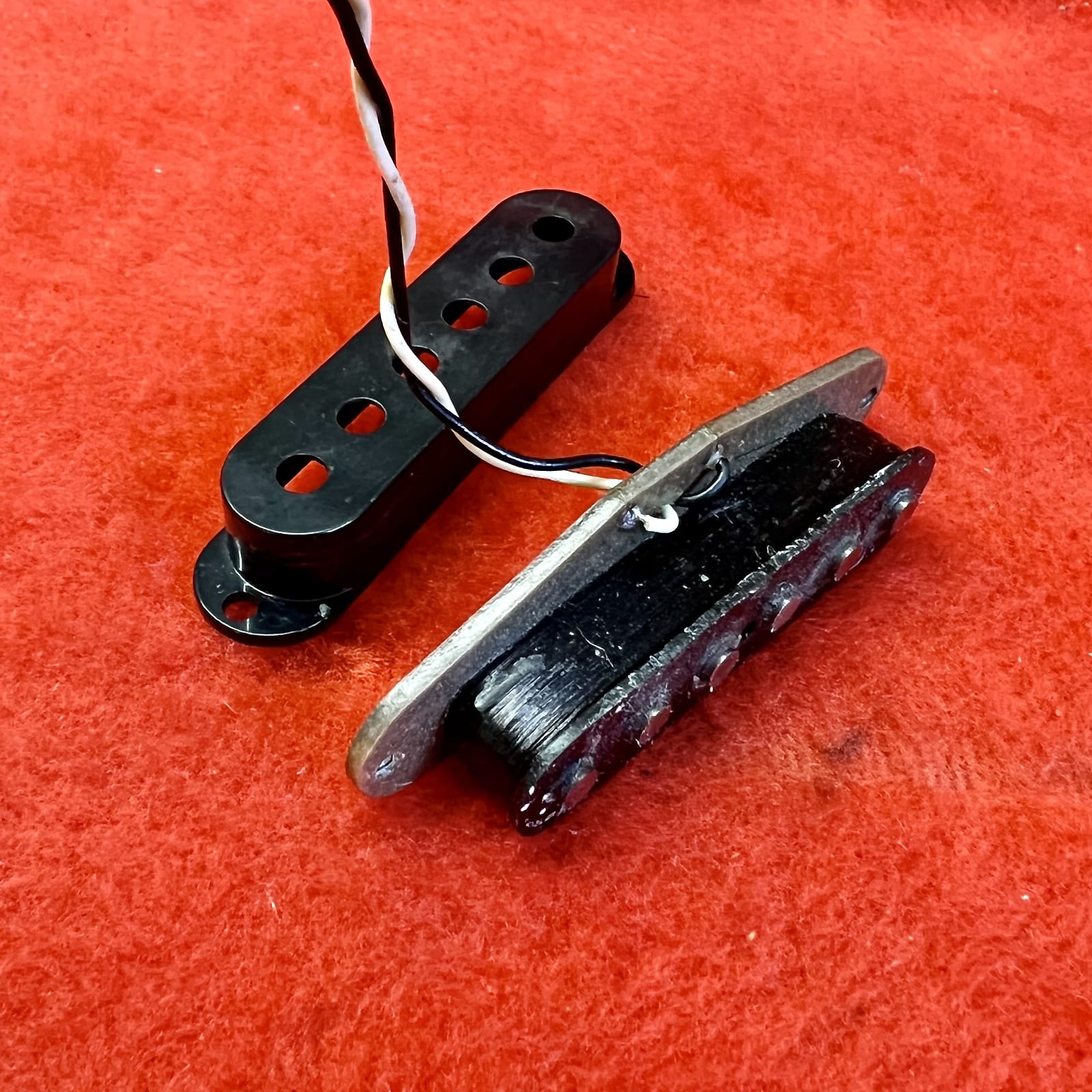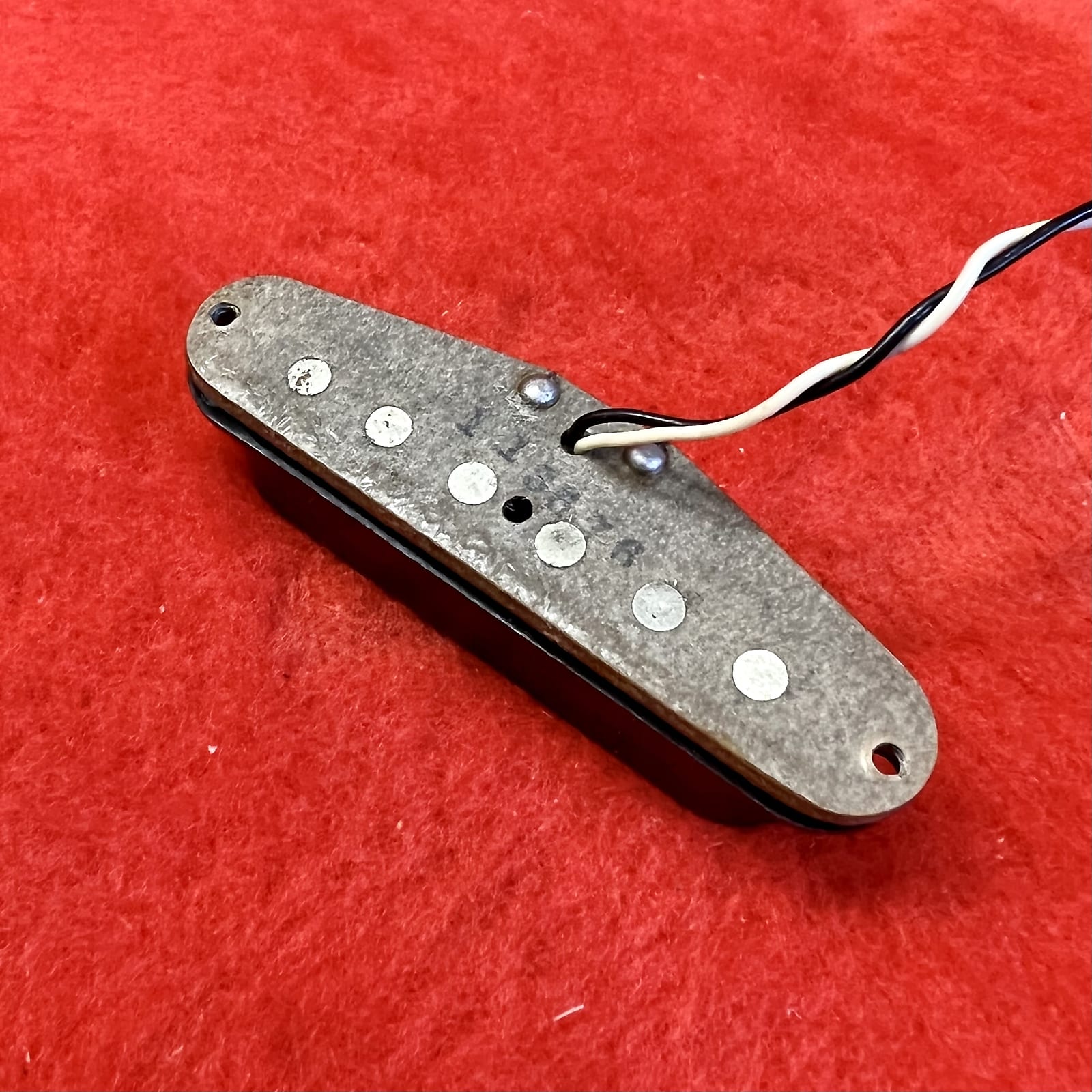FENDER STRATOCASTER 70s PICKUPS
This page is definately a work in progress and I’m doing it mostly for the fun of it. DO not hold this page as a defacto reference because I’m basing the info on all the historic pickup information I’m finding and doing a Meta Analysis of them. As with the internet, bad info can be propagated but I tried to use different sources and more than one post to try to nail down the truth. One thing that’s for sure, these guys command ridiculous values.
If the wires are not BLACK and WHITE they have likely been rewired, or at least new wires soldered on. And, as long as I talk about rewinding, be on the watch for that one.
Enjoy the fruits of my labor and I welcome any input or photos of YOUR Stratocaster pickups on your 70s Stratocaster!!
NOTE: I have a rating of C1 to C5 on the confidence level of this information – C1 means very little confidence C5 means high confidence
FIGURING OUT PICKUPS
A great place to start is here: Fender Pickup Check List Fender typically has no “set” look for their pickups and often no number scheme or another unique identifier written on the pickup itself, usually the number of the pickup represents some or all the SKU when it does exist, but not always are all the numbers written or even written on them at all. The best way to identify them is often by looks and measurements combined. That said, some pickups, like the noiseless ones, are very easy to identify other can be dog gone hard. Bottoms, Wires and such make it a complete detective project at times because Fender would use whatever pickups they had on guitars in some cases so an MIM could show up with higher end pickups, or test runs, etc.Big Picture Info
- Don’t be fooled – The “Number” on the back of the pickup is usually a middle number in the actually part number or part of the part number, and this may change over time for the same model of pickup. Sometimes it’s rock solid so examine with caution.
- The number that is “molded” into the plastic is a BOBBIN NUMBER and is used over and over in different pickups. That just the plastic part number and is worthless for identifying pickups.
- The resistance values are approx. and can vary up to 10% in some cases or even more. The DCR are a guideline, not an absolute but in some cases they are very close.
- Pay attention to the stock wires used.
- Pay attention to the staggering on the poles.
- DCR is only PART of the sonic equation!!
Last Page Update:2024.02.20
Dating
from another website
Bobbins
1972-1974
These are pretty similar to the later version but there is one major change which was these are STAGGERED but the 1975+ ones are flat.
These got wacky, I was searching for them and many of them did NOT have 72 at the end of the number but had 82 and other strange values. This is what I mean, when your looking, where is the consistency? Are these simply wrong?
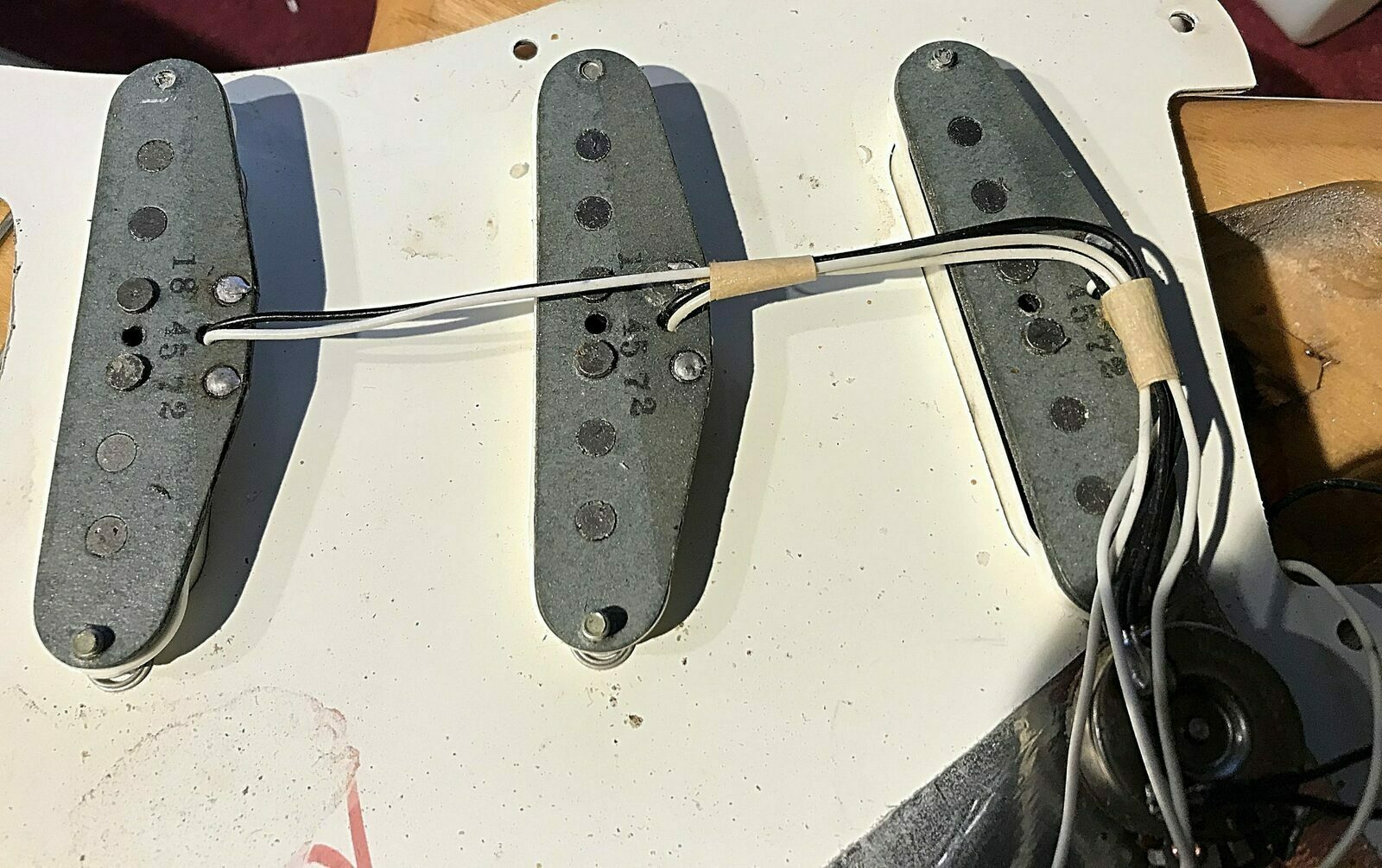
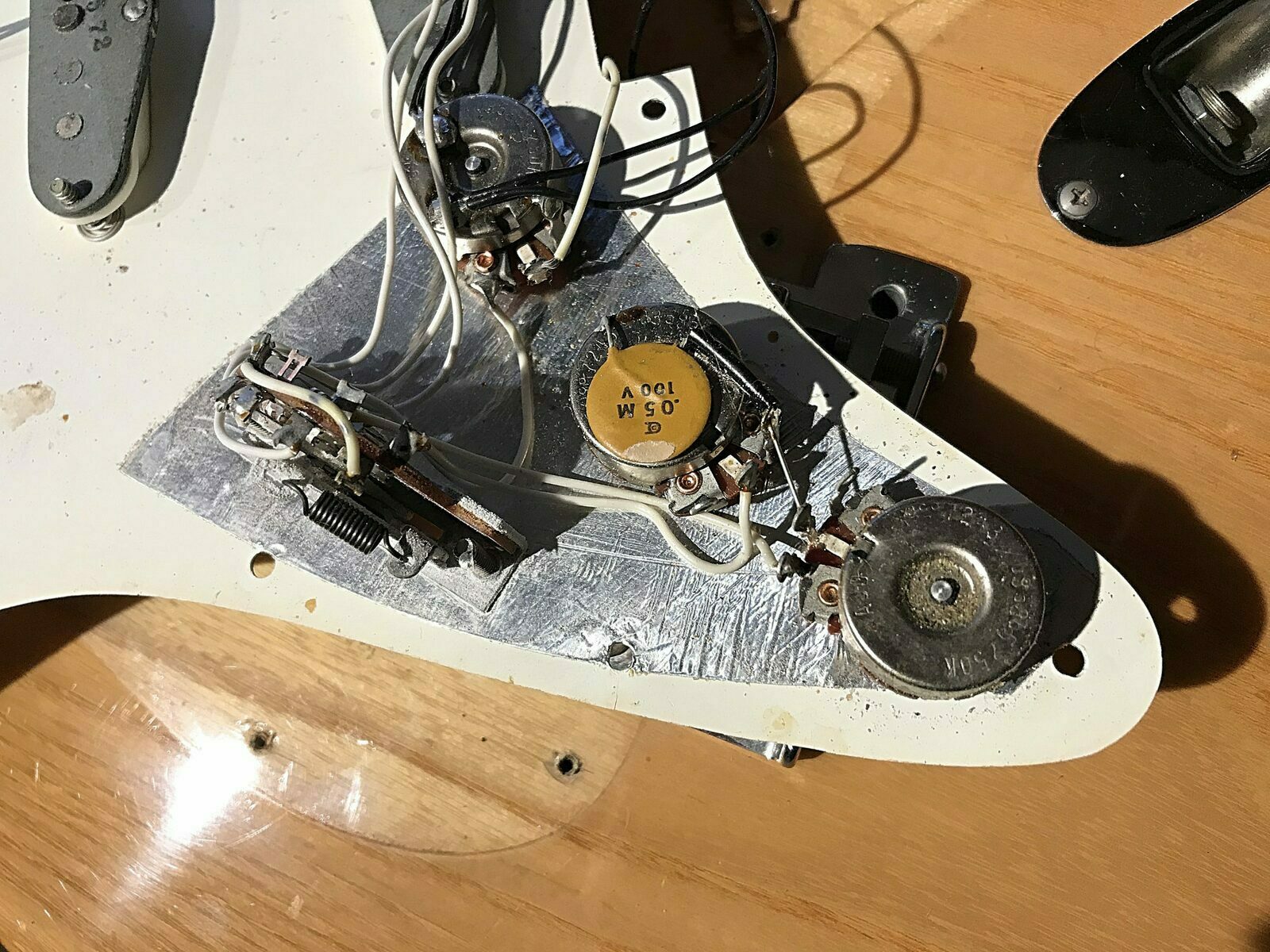
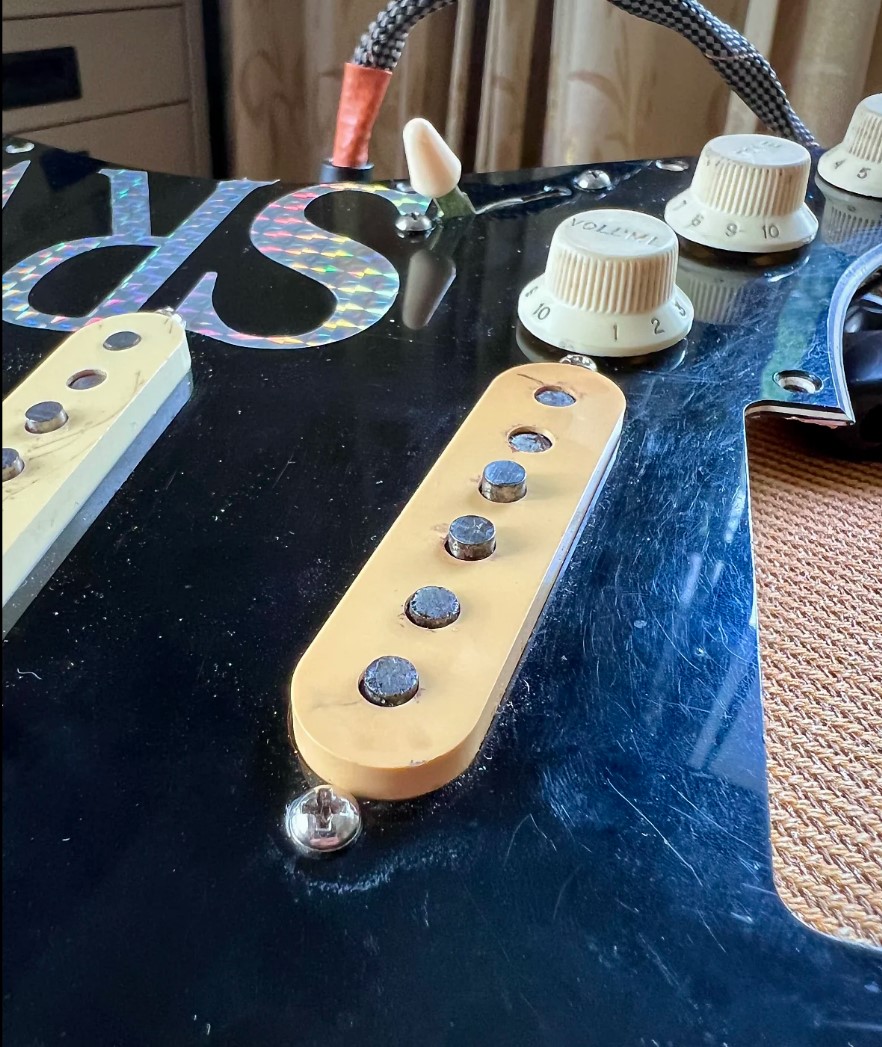
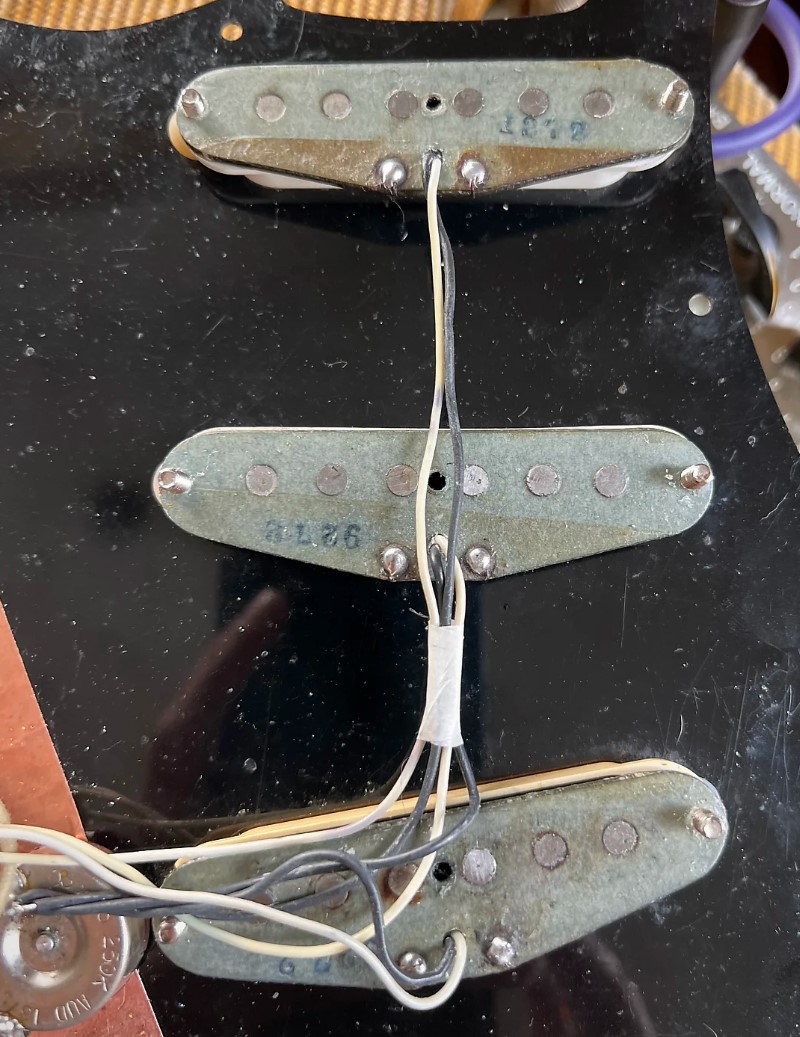
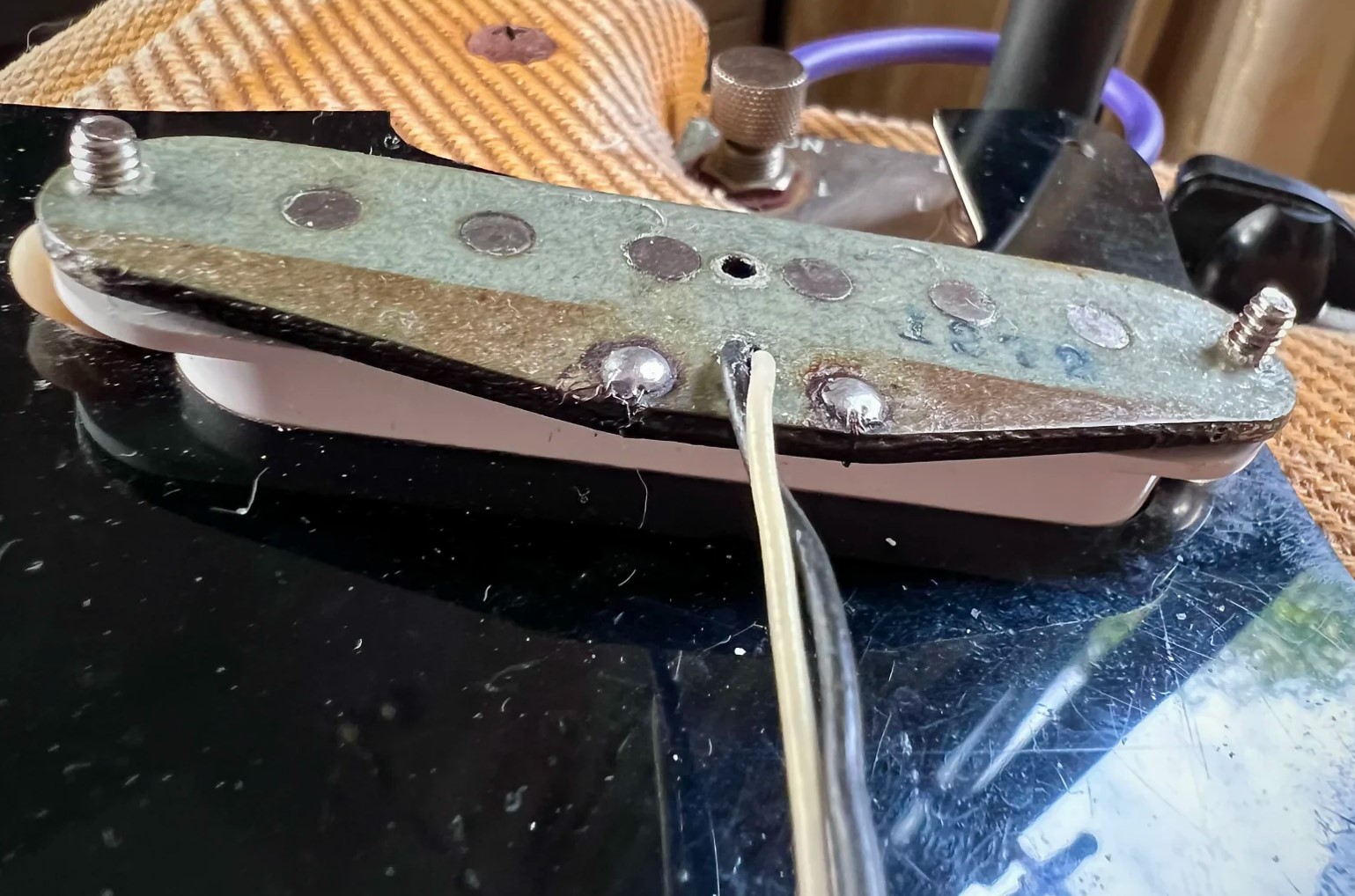
1973
5.72K (Bridge) – 5.69K (Middle) and 6.2 K (Neck)
Full numbers: 263673, 263573, 193573 (different winder neck pickup)
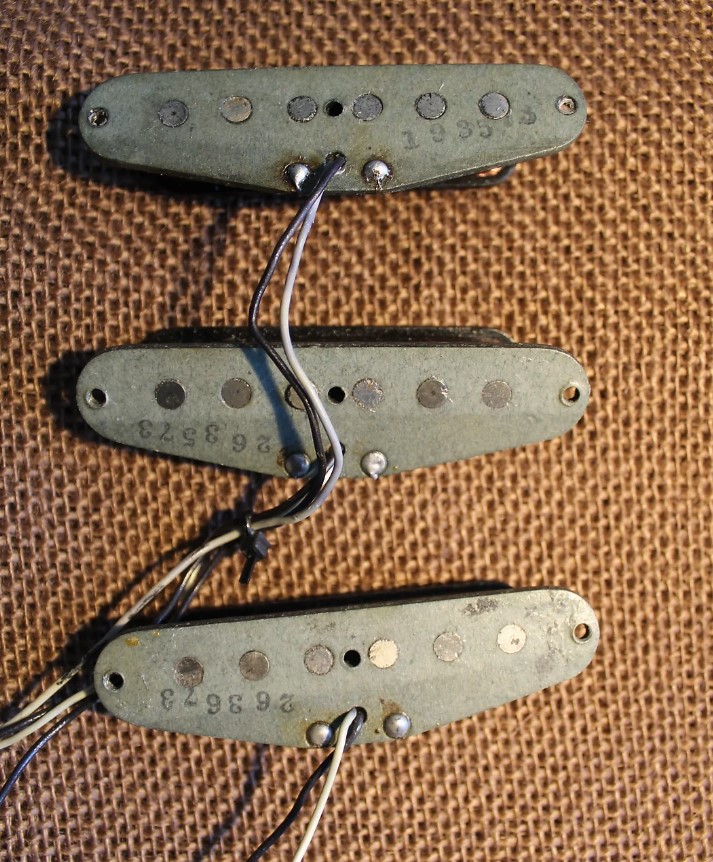
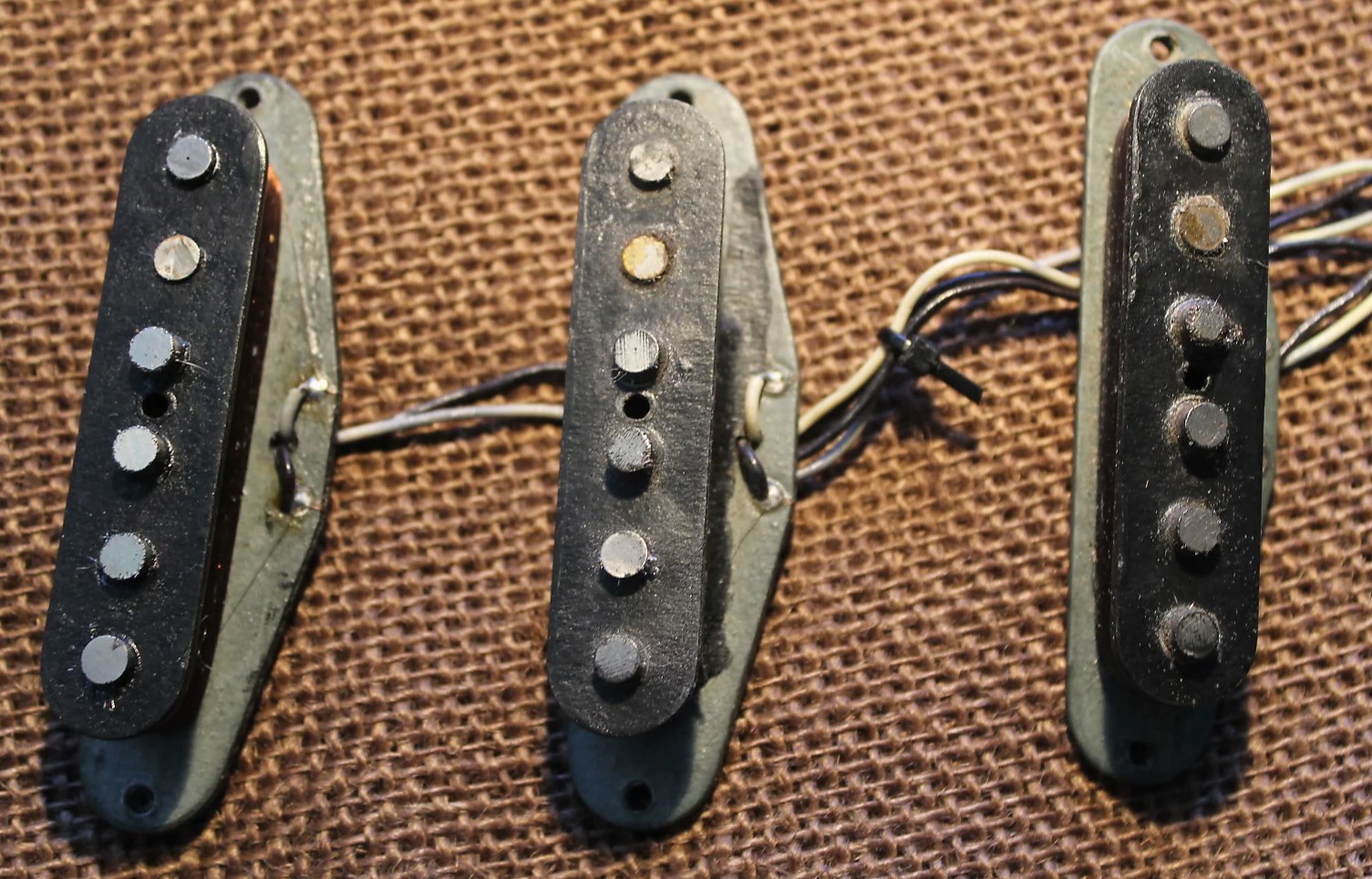
1974
5.5K – 5.6K – 5.5K
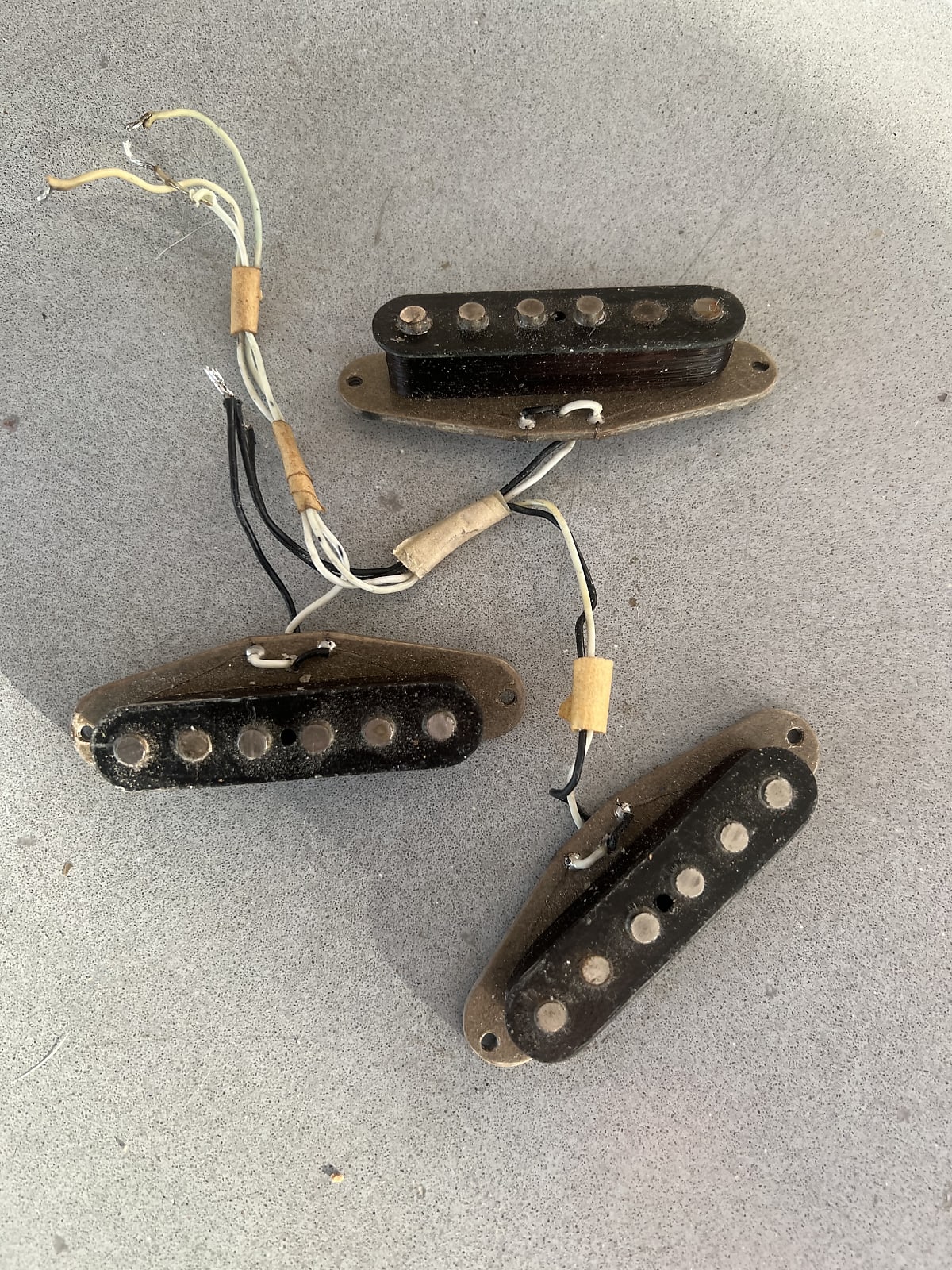
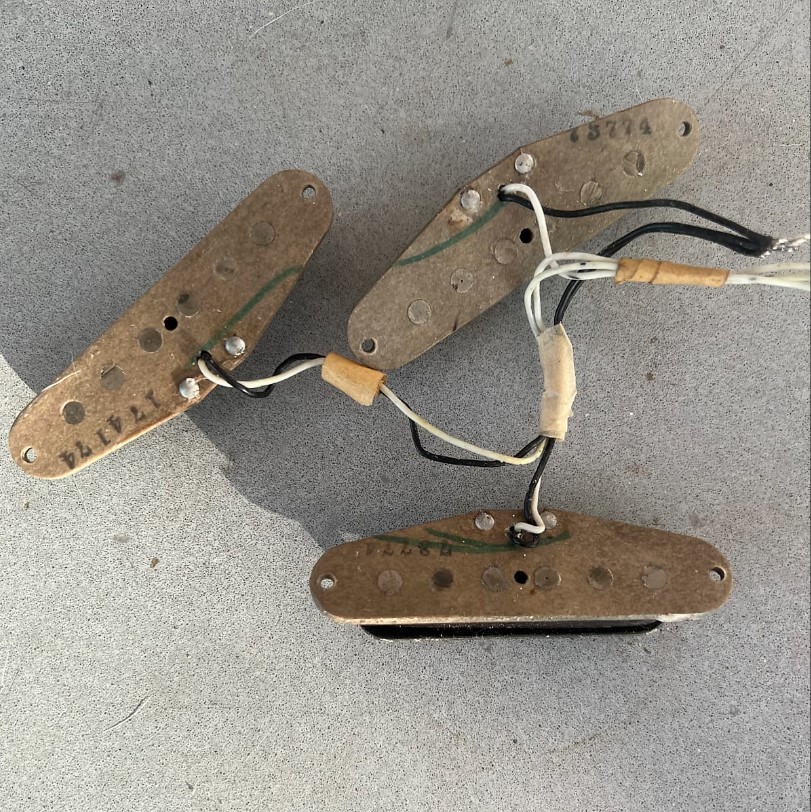
1975 To 1978+
These pickups are approximately the same value. In other words, no special position required. Personally, I see no magic here and a LOT of unknowns.
NOTE: I have a rating of C1 to C5 on the confidence level of this information – C1 means very little confidence C5 means high confidence
Spec:
- No Bevel, cut flat – C5
- No Stagger – C5
- Older than 1975 MIGHT be staggered – the 75 and 76 I saw are NOT staggered
- Black and White leads all of them – C5
- Gray Bottom – C5
- Plastic Wire (not cloth) – C5
- Black Enamel Wire – C5
Real measurements Since these are the same, this are all variance values. The range is wide but they are from about 5.6 to 6 DCR – Inductance is unknown until I get a set in my hands that I trust.
These could vary through the years but that data is known.
- Set 1
- 5.61K
- 5.74K
- 5.8K
- Set 2
- 5.99K
- 5.96K
- 6.04K
- Set 3
- 5.74K
- 5.66K
- 5.79K
- Another Set
- 5.73K
- 5.69K
- 5.56K
- 1976 – Unknown Position: 5.77K, 5.8K, 5.86K
Number: 3 to 4 digits follow by 2 DIGITS which are the YEAR – For example: 89375 is 1975 – Stamped on the bottom – C4
1975
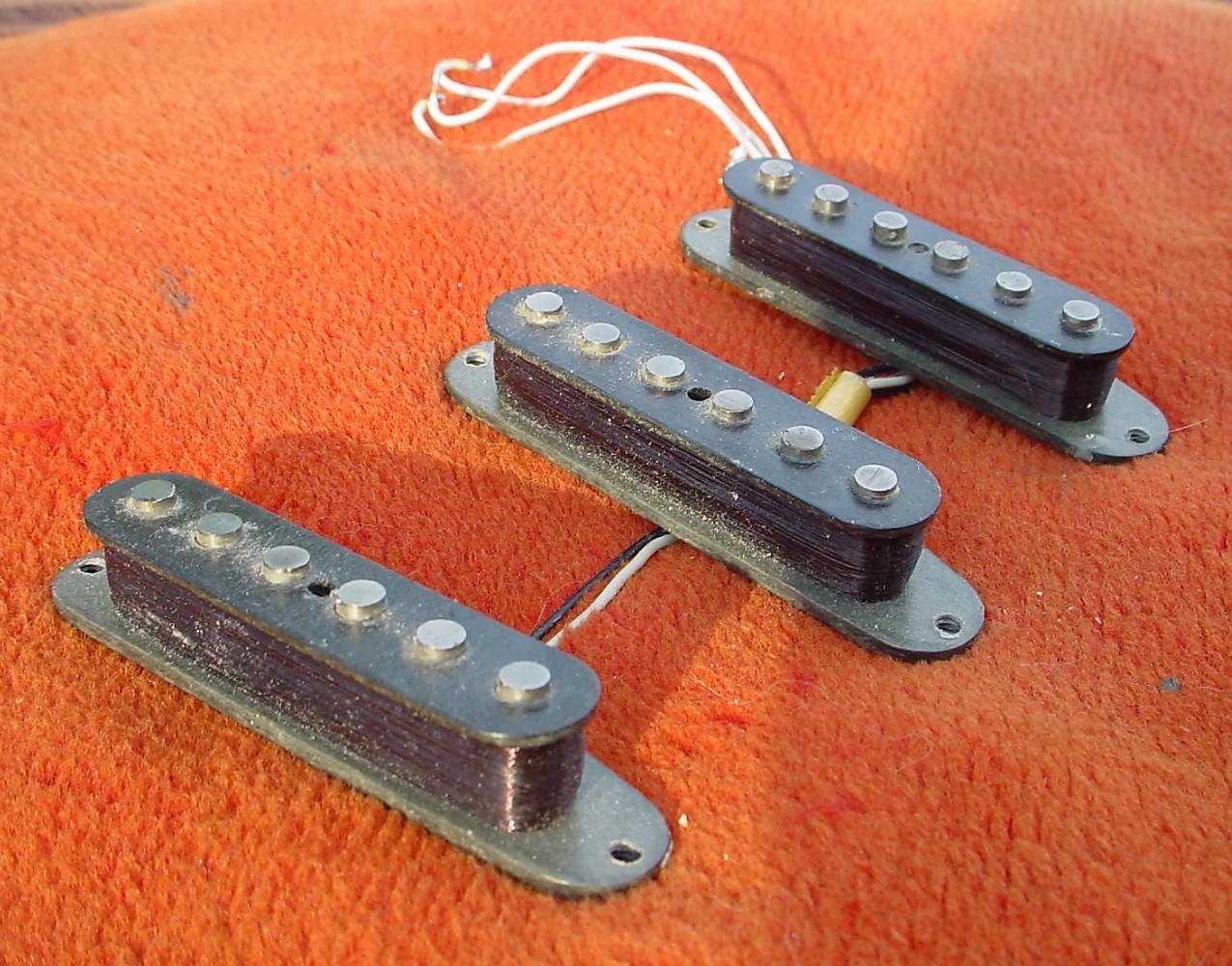
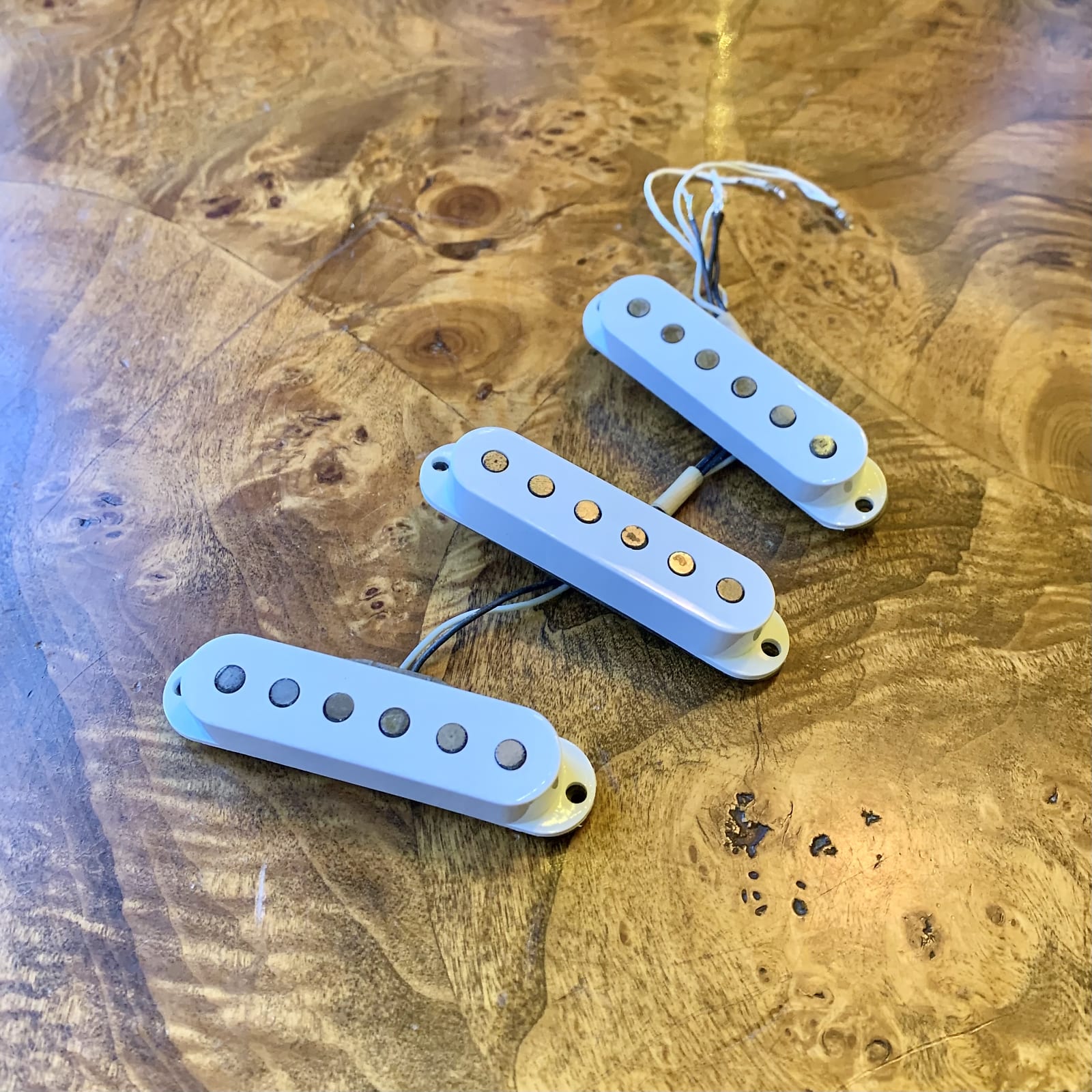
I like this photo because the pickup covers actually look real.
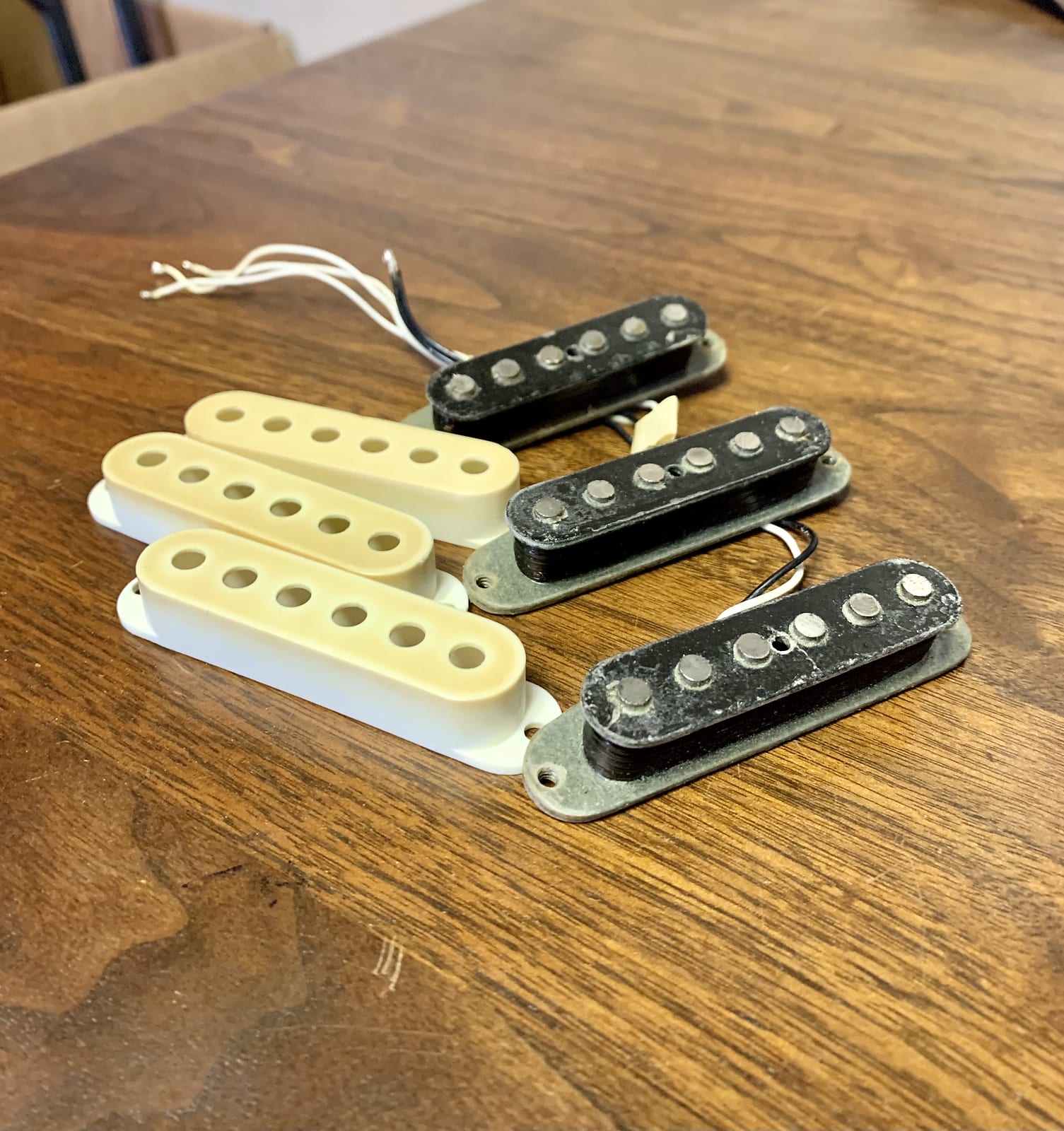
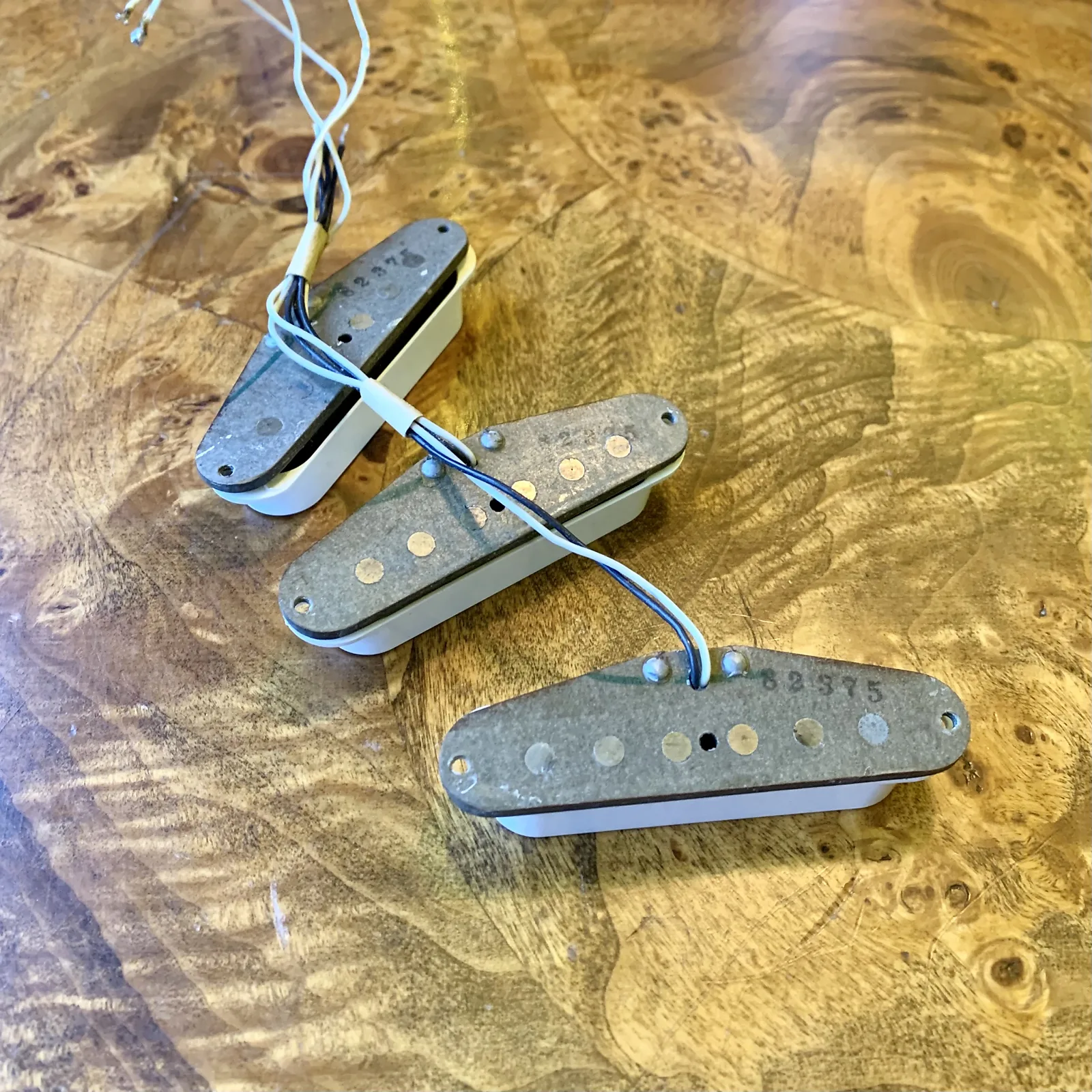
1976
Reading 5.77K, 5.86K and 5.8K (both real measurements)
